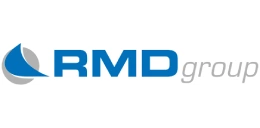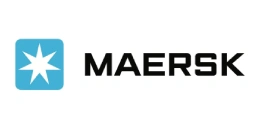Synthetic Graphite Cost Model: Tracking Value from Raw to Refined
_11zon.webp)
What is Synthetic Graphite?
Synthetic graphite is a state-of-the-art carbon material developed through petroleum coke and coal tar pitch treatment at high temperatures, providing highly crystalline carbon materials of higher purity and uniformity than natural graphite. Synthetic graphite is produced in controlled industrial conditions unlike natural graphite, which is excavated.
Key Applications Across Industries:
This allows for property tailoring like high heat conductivity, high electrical conductivity, low impurities, and regular particle size. These properties make it invaluable in a vast array of applications. The biggest and most rapidly expanding application for synthetic graphite is in the anodes of lithium-ion batteries, especially for electric vehicles (EVs), where its consistency and cycle life exceed most natural graphite grades. Aside from energy storage, synthetic graphite is critical in electrodes for electric arc furnaces in steel production, refractories, lubricants, and specialty uses like nuclear reactors and aerospace materials. Despite being more energy-intensive and higher in production cost than natural graphite, synthetic graphite's performance benefits guarantee its pivotal position in high-tech and energy transition sectors.
What the Expert Says: Market Overview & Growth Drivers
The global synthetic graphite market reached a volume of 2.71 Million Tons in 2024. According to IMARC Group, the market is projected to reach 6.78 Million Tons by 2033, at a projected CAGR of 11.0% during 2025-2033. The market for synthetic graphite is dominated by the increasing demand for lithium-ion batteries, driven by rapid electric vehicle adoption, grid-scale energy storage, and portable electronics.
Supportive government policies for EV adoption and regionally based battery supply chains, particularly in the U.S., Europe, and Asia-Pacific, are driving investment in synthetic graphite capacity. The demand for high-performance anode materials with higher cycle life, purity, and safety ranks synthetic graphite as a preferable option compared to natural graphite, especially due to supply chain security issues and China's restrictions on exports. Expansion in steel making, in which electric arc furnaces utilize synthetic graphite electrodes, provides another secure base of demand. Increasing investment in next-generation energy technologies, aerospace, and nuclear power also is broadening synthetic graphite's industrial reach. Strategic projects, such as DOE loan guarantees in the United States, mega-expansions by POSCO, NOVONIX, and Graphite India, and Indian and North American supply chain diversification, also support growth in the market.
Case Study on Cost Model of Synthetic Graphite Manufacturing Plant:
Objective
One of our clients reached out to us to conduct a feasibility study for setting up a large-scale synthetic graphite manufacturing plant.
IMARC Approach: Comprehensive Financial Feasibility
We developed a comprehensive financial model for the setup and operation of a proposed synthetic graphite manufacturing plant in Tennessee, United States. This plant is designed to produce 50,000 tons of synthetic graphite annually.
Manufacturing Process: Synthetic graphite production starts with calcination of raw petroleum coke, where volatile matter, moisture, and sulfur compounds are driven off at 900–1300°C, resulting in calcined petroleum coke (CPC) with >98.5% carbon. CPC is mixed with molten coal tar pitch (150–180°C) to produce a homogeneous carbonaceous paste. This blend is molded, extrusion-shaped, isostatically pressed, or vibration-molded into "green artifacts." The artifacts are then baked (800–1000°C) to carbonize the pitch, expelling volatiles and adding strength. For adding density, they can be impregnated with fresh pitch and re-baked at ~1000–1100°C, a process iterated for high-performance products. The energy-most demanding step, graphitization (2500–2800°C), restructures carbon into crystalline graphite eliminating remaining impurities and providing high conductivity, lubricity, and stability. Cooling down, products are then machined to final dimensions; for very high-purity applications such as batteries or nuclear, further chemical (HF) or thermal purification provides >99.99% purity. Graphite is finally sized, packed in moisture/oxidation-resistant packaging material, and supplied for use in batteries, electrodes, refractories, and advanced industries.
_11zon.webp)
Mass Balance and Raw Material Required: The primary raw materials used in the synthetic graphite producing plant are raw petroleum coke and coal tar pitch. For a plant producing 1 ton of synthetic graphite, 1.30 ton of raw petroleum coke, and 0.30 ton of coal tar pitch is required.
Techno-Commercial Parameter:
- Capital Investment (CapEx): Capital expenditure (CapEx) in a manufacturing plant includes various investments essential for its setup and long-term operations. It covers machinery and equipment costs, including procurement, installation, and commissioning. Civil works expenses involve land development, factory construction, and infrastructure setup. Utilities such as power, water supply, and HVAC systems are also significant. Additionally, material handling systems, automation, environmental compliance, and safety measures are key components. Other expenditures include IT infrastructure, security systems, and office essentials, ensuring operational efficiency and business growth.
- Operating Expenditure (OpEx): Operating expenditure is the cost incurred to operate a manufacturing plant effectively. Opex in a manufacturing plant typically includes the cost of raw materials, utilities, depreciation, taxes, packing cost, transportation cost, and repairs and maintenance. The operating expenses are part of the cost structure of a manufacturing plant and have a significant effect on profitability and efficiency. Effective control of these costs is necessary for maintaining competitiveness and growth.
_11zon.webp)
- Profitability Analysis Year on Year Basis: The proposed synthetic graphite plant, with a capacity of 50,000 tons of synthetic graphite annually, achieved an impressive revenue of US$ 300 million in its first year. We assisted our client in developing a detailed cost model, which projects steady growth, with revenue rising throughout the projected period. Moreover, gross profit margins improve from 57.5% to 59.1% by year 5, and net profit rises from 11.0% to 33.5%, highlighting strong financial viability and profitability.
.webp)
Conclusion & IMARC's Impact:
Our financial model for the synthetic graphite manufacturing plant was meticulously developed to meet the client’s objectives, providing an in-depth analysis of production costs, including raw materials, manufacturing, capital expenditure, and operational expenses. By addressing the specific requirements of producing 50,000 tons of synthetic graphite annually, we successfully identified key cost drivers and projected profitability, considering market trends, inflation, and potential fluctuations in raw material prices. This comprehensive financial model equipped the client with valuable insights into strategic decision-making, demonstrating our commitment to delivering high-quality, client-focused solutions that ensure the long-term success of large-scale manufacturing ventures.
Latest News and Developments:
- In August 2025, Graphite India announced its plants to invest in the Synthetic Graphite Anode Material (SGAM) project. On August 29, 2025, Graphite India and the Maharashtra government signed a Memorandum of Understanding (MoU) to support the company's planned investment in the state for a "Synthetic Graphite Anode Material (SGAM) & Others" project.
- In August 2025, India's Epsilon Advanced Materials is acting quickly to finalise agreements to provide vital parts to South Korean and Japanese battery manufacturers in the United States following the imposition of high tariffs on Chinese graphite imports into the country.
- In January 2024, South Korea's POSCO Future M Co. announced that it will significantly increase its synthetic graphite production by the end of 2025. POSCO intends to expand its synthetic graphite production from the current 8,000 tonnes annually to 18,000 tonnes by the end of 2024.
Why Choose IMARC:
IMARC's Financial Model Expertise: Helping Our Clients Explore Industry Economics
IMARC is a global market research company that offers a wide range of services, including market entry and expansion, market entry and opportunity assessment, competitive intelligence and benchmarking, procurement research, pricing and cost research, regulatory approvals and licensing, factory setup, factory auditing, company incorporation, incubation services, recruitment services, and marketing and sales.
Under our factory setup services, we assist our clients in exploring the feasibility of their plants by providing comprehensive financial modeling. Additionally, we offer end-to-end consultation for setting up a plant in India or abroad. Our financial modeling includes an analysis of capital expenditure (CapEx) required to establish the manufacturing facility, covering costs such as land acquisition, building infrastructure, purchasing high-tech production equipment, and installation. Furthermore, the layout and design of the factory significantly influence operational efficiency, energy consumption, and labor productivity, all of which impact long-term operational expenditure (OpEx). So, every parameter is covered in the analysis.
At IMARC, we leverage our comprehensive market research expertise to support companies in every aspect of their business journey, from market entry and expansion to operational efficiency and innovation. By integrating our factory setup services with our deep knowledge of industry dynamics, we empower our clients to not only establish manufacturing facilities but also strategically position themselves in highly competitive markets. Our financial modeling and end-to-end consultation services ensure that clients can explore the feasibility of their plant setups while also gaining insights into competitors' strategies, technological advancements, and regulatory landscapes. This holistic approach enables our clients to make informed decisions, optimize their operations, and align with sustainable practices, ultimately driving long-term success and growth.
Our Clients
Contact Us
Have a question or need assistance?
Please complete the form with your inquiry or reach out to us at
Phone Number
+91-120-433-0800+1-201-971-6302
+44-753-714-6104










